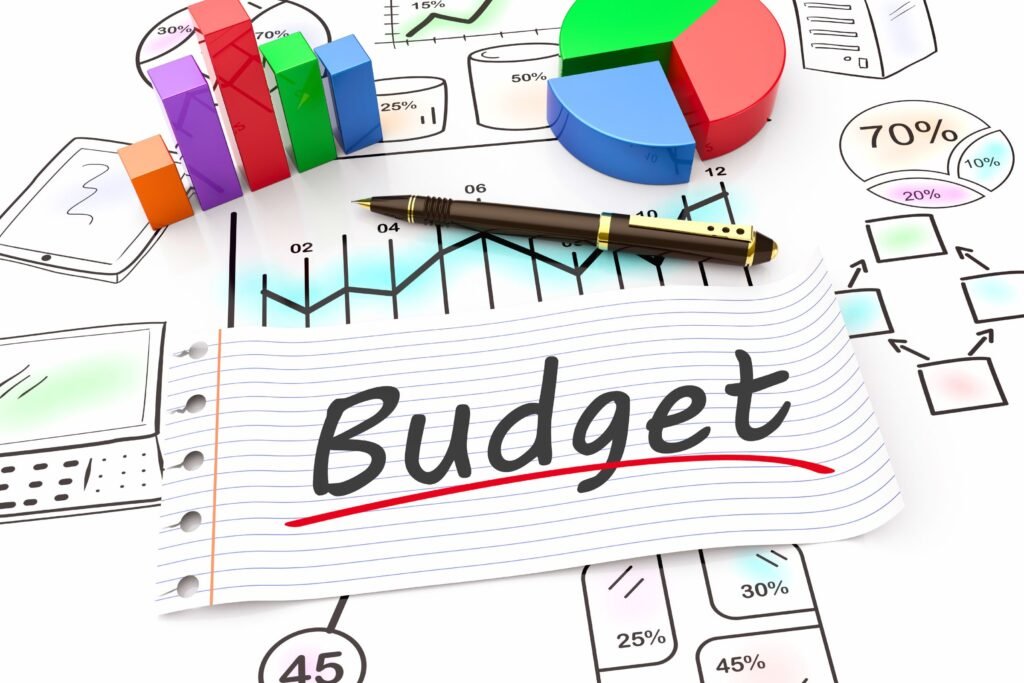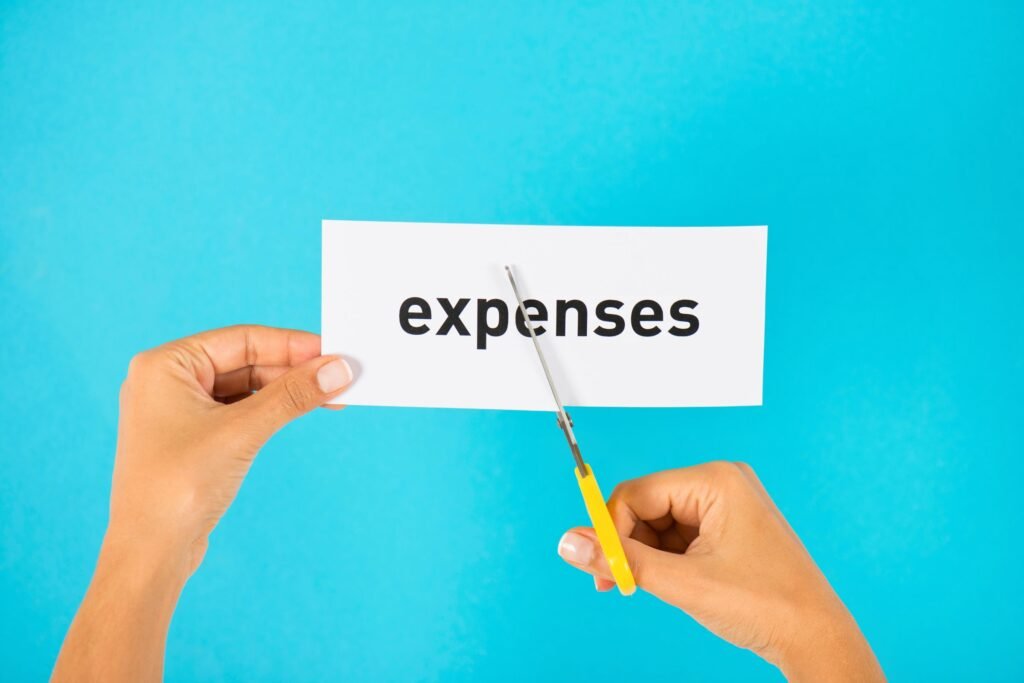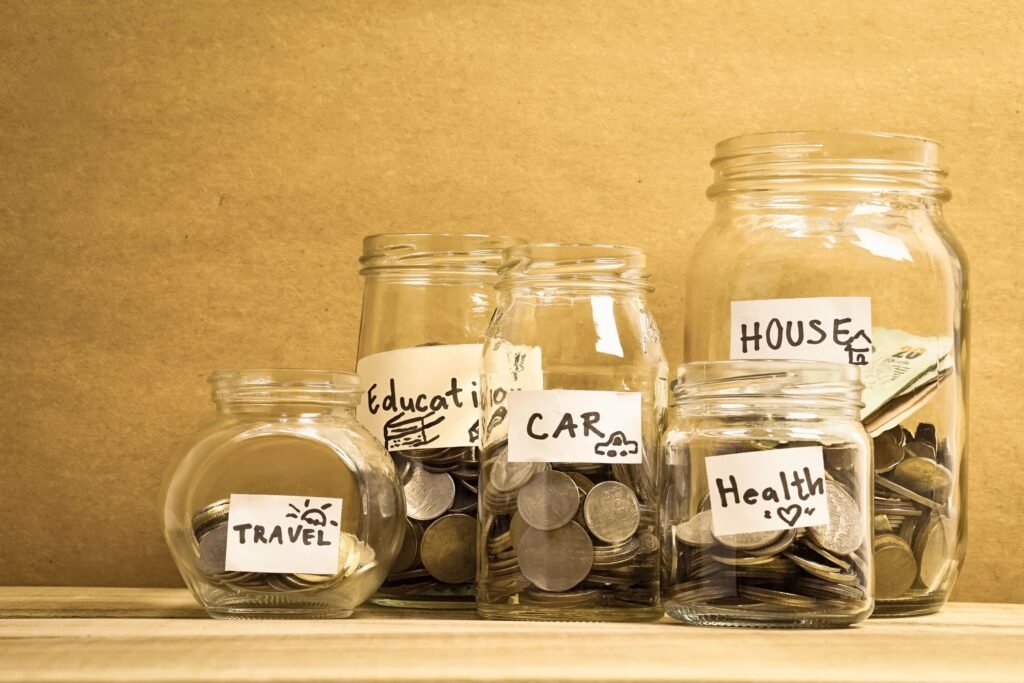In an era where financial stability and savvy money management are paramount, finding practical ways to save money has never been more crucial. Whether you’re looking to bolster your savings account, pay off debt, or simply stretch your budget further, adopting effective money-saving strategies can make a significant difference in achieving your financial goals. In this comprehensive guide, we’ll explore ten actionable ways to save money that are not only easy to implement but also sustainable in the long term.
From budgeting basics to savvy shopping tips, each strategy is designed to help you trim unnecessary expenses, maximize your savings potential, and build a stronger financial future. By taking control of your finances and making intentional choices about how you spend and save your hard-earned money, you can unlock new opportunities for financial freedom and security.
Whether you’re a seasoned saver or just starting your journey towards financial independence, there’s something for everyone in this guide. So, without further ado, let’s dive into the top ten ways to save money and empower yourself to take charge of your financial destiny.
Create a Budget

Start by tracking your expenses and income to understand where your money is going. Then, set realistic spending limits for each category and stick to them.
Creating a budget is the foundation of any successful money-saving strategy. It begins with understanding your current financial situation. Start by meticulously tracking all your expenses, including bills, groceries, dining out, entertainment, and any other purchases. Many online tools and mobile apps can help you with this task, categorizing your spending and providing insights into your habits.
Once you have a clear picture of your spending habits, it’s time to create a budget. Begin by listing all your sources of income, including your salary, side hustle earnings, and any other sources of revenue. Next, allocate these funds to various categories, such as housing, transportation, utilities, groceries, entertainment, savings, and debt repayment.
When setting spending limits for each category, be realistic and considerate of your financial goals. It’s essential to differentiate between needs and wants, prioritizing necessities while allowing some room for discretionary spending. Remember to allocate a portion of your income towards savings and emergency funds to build financial resilience.
To stick to your budget, consider using cash envelopes or digital tools that track your spending in real-time. Regularly review your budget and make adjustments as needed, especially when your financial circumstances change. By consistently adhering to your budget, you can take control of your finances and make significant strides towards your savings goals.
Creating and sticking to a budget requires discipline and commitment, but the rewards of financial stability and peace of mind are well worth the effort. Start today and take the first step towards a brighter financial future.
Cook at Home

Eating out can quickly drain your wallet. Instead, plan your meals and cook at home to save money on food costs.
In today’s fast-paced world, the convenience of dining out or ordering takeout can be tempting. However, the cost of eating out regularly adds up quickly and can put a significant strain on your budget. By choosing to cook at home, you not only save money but also gain greater control over the quality and nutritional value of your meals.
Planning your meals in advance is key to successful home cooking. Start by creating a weekly or monthly meal plan, taking into account your schedule, dietary preferences, and any ingredients you already have on hand. Once you have a plan in place, make a shopping list and stick to it when grocery shopping to avoid impulse purchases.
Cooking at home doesn’t have to be complicated or time-consuming. Look for simple and budget-friendly recipes that use affordable ingredients and require minimal prep work. Consider batch cooking on weekends or evenings when you have more time, preparing larger quantities of meals that can be portioned out and frozen for later use.
In addition to saving money, cooking at home offers numerous other benefits. It allows you to experiment with new flavors and cuisines, improve your cooking skills, and foster a sense of connection and togetherness with family and friends. Plus, eating homemade meals is often healthier than dining out, as you have full control over the ingredients and cooking methods used.
If you’re short on time or energy, there are plenty of shortcuts and meal prep hacks to make home cooking more manageable. Invest in time-saving kitchen gadgets, such as a slow cooker or Instant Pot, and consider enlisting help from family members or meal prep services.
By making cooking at home a regular part of your routine, you can save money, eat healthier, and enjoy delicious homemade meals with loved ones. So next time you’re tempted to dine out, opt for a home-cooked meal instead and watch your savings grow.
Use Coupons and Discounts

Take advantage of coupons, deals, and loyalty programs to save money on groceries, clothing, and other essentials.
Coupons and discounts are powerful tools for savvy shoppers looking to stretch their dollars further. With a little bit of effort and planning, you can significantly reduce your expenses on everyday purchases and big-ticket items alike.
One of the easiest ways to find coupons and discounts is by browsing online coupon websites, manufacturer websites, and retailer apps. These platforms often offer digital coupons that you can clip and redeem at checkout, saving you both time and money. Additionally, sign up for email newsletters and loyalty programs from your favorite stores to receive exclusive discounts and special offers directly to your inbox.
When it comes to grocery shopping, coupons can help you save money on everything from pantry staples to fresh produce. Keep an eye out for coupons in newspapers, magazines, and coupon inserts, and don’t forget to check the expiration dates to ensure they’re still valid. Many grocery stores also offer digital coupons that you can load onto your loyalty card or smartphone app for added convenience.
In addition to traditional paper coupons, look for cashback apps and rebate offers that allow you to earn money back on your purchases. These apps work by scanning your receipts and matching eligible items with cashback offers, allowing you to earn rewards on items you would have purchased anyway.
When shopping for clothing and other essentials, always be on the lookout for sales, clearance events, and promotional discounts. Many retailers offer significant savings during holiday weekends, end-of-season clearance sales, and annual blowout events. By timing your purchases strategically and combining discounts, you can score big savings on clothing, electronics, home goods, and more.
Lastly, don’t forget to comparison shop before making a purchase to ensure you’re getting the best deal possible. Use price comparison websites and browser extensions to quickly compare prices across multiple retailers and find the lowest price available.
By incorporating coupons, deals, and discounts into your shopping routine, you can save money on everyday purchases and free up more cash to put towards your savings goals.
Shop Secondhand

Buying gently used items, such as clothing, furniture, and electronics, can save you a significant amount of money compared to buying new.
In today’s consumer culture, there’s often a strong emphasis on purchasing new items, whether it’s the latest fashion trends, cutting-edge electronics, or stylish furniture. However, buying brand new often comes with a hefty price tag. Fortunately, there’s a more budget-friendly alternative: shopping secondhand.
Secondhand shopping offers a treasure trove of gently used items at a fraction of the cost of buying new. Whether you’re in the market for clothing, furniture, electronics, or household goods, there’s a wealth of options available at thrift stores, consignment shops, online marketplaces, and garage sales.
One of the biggest advantages of shopping secondhand is the significant cost savings. By opting for pre-owned items, you can often find high-quality goods at a fraction of their original retail price. Plus, shopping secondhand is environmentally friendly, as it helps reduce waste and extend the lifespan of products that might otherwise end up in landfills.
When shopping for secondhand items, it’s essential to inspect them carefully for any signs of wear or damage. Look for items that are still in good condition and have plenty of life left in them. Don’t be afraid to haggle or negotiate prices, especially at garage sales and flea markets, where bargaining is expected.
In addition to saving money, shopping secondhand offers the opportunity to find unique and one-of-a-kind items that you won’t find anywhere else. Whether it’s a vintage piece of furniture, a rare collectible, or a designer outfit at a fraction of the cost, secondhand shopping allows you to express your personal style and individuality without breaking the bank.
In conclusion, shopping secondhand is a smart and sustainable way to save money on a wide range of items. By embracing the thrill of the hunt and exploring the world of pre-owned goods, you can enjoy significant savings while reducing your environmental footprint and adding unique pieces to your wardrobe and home décor.
Cut Unnecessary Expenses

Review your recurring expenses and eliminate any services or subscriptions that you don’t use or need.
In today’s subscription-driven world, it’s easy to accumulate a variety of recurring expenses that can quickly add up over time. From streaming services and gym memberships to magazine subscriptions and monthly subscription boxes, these expenses can eat away at your budget if left unchecked. That’s why it’s essential to regularly review your recurring expenses and identify opportunities to cut back and save money.
Start by gathering all your financial statements, credit card bills, and bank statements to create a comprehensive list of your recurring expenses. This includes everything from utility bills and insurance premiums to subscription services and membership fees. Once you have a complete list, take a close look at each expense and ask yourself whether you’re getting value from it.
Identify any services or subscriptions that you rarely use or no longer need and consider canceling them to free up extra cash in your budget. This could include unused gym memberships, magazine subscriptions that you never read, or streaming services that you rarely use. Remember, every dollar you save by cutting unnecessary expenses is money that you can put towards your savings goals or other priorities.
If you’re unsure whether a particular expense is worth keeping, try temporarily suspending or canceling it for a month to see if you miss it. You may find that you can live without certain services or subscriptions, freeing up even more money in your budget.
In addition to canceling unused services, look for opportunities to negotiate lower rates or find cheaper alternatives for essential services. Shop around for better deals on insurance, phone plans, and internet service providers, and don’t be afraid to negotiate with your current providers for better rates or discounts.
By regularly reviewing your recurring expenses and cutting back on unnecessary spending, you can free up more money in your budget and make significant strides towards your savings goals. Remember, every dollar saved is a step closer to financial freedom and security.
Automate Your Savings

Set up automatic transfers from your checking account to your savings account to make saving money effortless.
Saving money can sometimes feel like a daunting task, especially if you’re juggling multiple financial responsibilities and commitments. However, by automating your savings, you can make the process much easier and more manageable.
Setting up automatic transfers from your checking account to your savings account is a simple yet effective way to make saving money a priority. Most banks and financial institutions offer the option to schedule recurring transfers on a weekly, bi-weekly, or monthly basis, allowing you to set it and forget it.
When automating your savings, it’s essential to determine how much you can afford to save each pay period. Start by reviewing your budget and identifying areas where you can cut back on expenses or reallocate funds towards savings. Aim to save a percentage of your income, whether it’s 5%, 10%, or more, depending on your financial goals and circumstances.
Once you’ve determined your savings goal, set up automatic transfers to occur shortly after each payday. By transferring money directly from your checking account to your savings account, you remove the temptation to spend it on non-essential purchases and ensure that your savings grow steadily over time.
In addition to automating regular transfers to your savings account, consider setting up separate savings goals for specific purposes, such as emergencies, vacations, or major purchases. Many banks offer the option to create multiple savings accounts or sub-accounts, allowing you to track your progress towards each goal separately.
Another option is to explore automatic savings apps and tools that round up your everyday purchases to the nearest dollar and transfer the spare change into a savings account. These apps make saving money painless and effortless, allowing you to build your savings gradually without even noticing.
By automating your savings, you can make saving money a habit and reach your financial goals faster and with less effort. Whether you’re saving for a rainy day, a big purchase, or your long-term financial future, automating your savings is a smart and effective way to make your money work harder for you.
Comparison Shop

Before making a purchase, compare prices online or in-store to ensure you’re getting the best deal.
With the rise of e-commerce and online shopping, consumers now have access to a vast array of products and retailers at their fingertips. However, the abundance of choices can also make it challenging to determine whether you’re getting the best deal on a particular item. That’s where comparison shopping comes in.
Comparison shopping involves researching and comparing prices for the same or similar products across multiple retailers, both online and in-store. By taking the time to shop around and compare prices, you can ensure that you’re getting the best possible deal and maximizing your savings.
One of the easiest ways to comparison shop is by using online price comparison websites and browser extensions. These tools allow you to quickly compare prices for a specific product across various online retailers, helping you identify the lowest price available. Additionally, many online retailers offer price-matching policies, allowing you to request a price match if you find the same item for less elsewhere.
In addition to online shopping, don’t overlook the value of in-store comparison shopping. Visit multiple brick-and-mortar retailers in your area to compare prices, especially for big-ticket items like electronics, appliances, and furniture. Keep in mind that prices may vary between stores, so it’s worth taking the time to explore all your options before making a purchase.
When comparison shopping, it’s essential to consider factors beyond just price, such as shipping costs, return policies, and customer reviews. While a lower price may seem like a great deal initially, it’s important to factor in any additional fees or hidden costs that could impact the overall value of your purchase.
Another tip is to time your purchases strategically to take advantage of sales, promotions, and discounts. Many retailers offer seasonal sales, holiday promotions, and clearance events where you can score significant savings on a wide range of products. By planning ahead and waiting for the right time to buy, you can maximize your savings and get the best possible deal.
In conclusion, comparison shopping is a valuable tool for saving money and getting the most value out of your purchases. Whether you’re shopping online or in-store, taking the time to compare prices and explore all your options can help you stretch your budget further and make smarter purchasing decisions.
Reduce Energy Usage

Lower your utility bills by turning off lights when not in use, unplugging electronics, and using energy-efficient appliances.
Reducing energy usage not only helps lower your utility bills but also contributes to environmental sustainability by conserving valuable resources and reducing greenhouse gas emissions. By adopting simple energy-saving habits and investing in energy-efficient technologies, you can make a significant impact on both your finances and the planet.
One of the easiest ways to reduce energy usage is by being mindful of your electricity consumption. Get into the habit of turning off lights, appliances, and electronics when they’re not in use, and encourage your family members to do the same. Consider using timers or smart plugs to automate the process and ensure that energy isn’t being wasted unnecessarily.
Another effective strategy is to unplug electronics and appliances when they’re not in use, especially devices that consume standby power even when turned off. This includes items like chargers, televisions, computers, and kitchen appliances. By unplugging these devices or using power strips with built-in surge protectors, you can prevent energy vampire appliances from wasting electricity and driving up your energy bills.
Investing in energy-efficient appliances and electronics is another smart way to reduce energy usage and save money in the long run. Look for products with the ENERGY STAR label, which indicates that they meet strict energy efficiency guidelines set by the U.S. Environmental Protection Agency (EPA). ENERGY STAR-certified appliances, such as refrigerators, washing machines, and air conditioners, use significantly less energy than their conventional counterparts, helping you save money on your utility bills while reducing your carbon footprint.
In addition to being mindful of your electricity consumption indoors, don’t forget about outdoor energy usage as well. Consider installing energy-efficient lighting, such as LED bulbs, in your outdoor fixtures to reduce energy usage and improve visibility. You can also save energy by properly insulating your home, sealing drafts, and using programmable thermostats to regulate heating and cooling when you’re away.
By taking simple steps to reduce energy usage in your home, you can lower your utility bills, minimize your environmental impact, and create a more sustainable living environment for future generations. Whether it’s turning off lights, unplugging electronics, or upgrading to energy-efficient appliances, every small change you make adds up to significant savings over time.
Cancel Unused Memberships

If you’re not getting value from a gym membership, streaming service, or other subscription, consider canceling it to save money.
Many of us sign up for memberships and subscriptions with the best intentions, whether it’s joining a gym to get in shape, subscribing to multiple streaming services for entertainment, or signing up for monthly subscription boxes for convenience. However, over time, it’s easy for these memberships to become neglected or underutilized, resulting in wasted money and unnecessary expenses.
One of the simplest ways to save money is by canceling unused memberships and subscriptions that you’re not getting value from. Start by reviewing your bank and credit card statements to identify any recurring charges for memberships or subscriptions that you no longer use or need. This could include gym memberships, streaming services, magazine subscriptions, meal delivery services, and more.
Once you’ve identified potential candidates for cancellation, ask yourself whether you’re truly getting value from each membership or subscription. If you find that you’re not using it regularly or it no longer aligns with your priorities and interests, it may be time to consider canceling it to free up extra cash in your budget.
When canceling memberships and subscriptions, be sure to review the terms and conditions carefully to understand any cancellation fees or penalties that may apply. Some memberships may require advance notice or have specific cancellation procedures, so it’s essential to follow the proper steps to avoid any unexpected charges or issues.
If you’re hesitant to cancel a membership or subscription outright, consider exploring alternative options or downgrading to a lower-tier plan that better fits your needs and budget. For example, many gyms offer pay-as-you-go or class-based membership options, while streaming services often have multiple subscription tiers with varying features and pricing.
In addition to canceling unused memberships, take a proactive approach to managing your subscriptions moving forward. Regularly review your expenses and evaluate whether each membership or subscription is still worth the cost. By being mindful of your spending and prioritizing value over convenience, you can make smarter decisions about which memberships and subscriptions to keep and which ones to cancel.
By canceling unused memberships and subscriptions, you can free up more money in your budget and redirect those funds towards your savings goals or other priorities. Whether it’s canceling that unused gym membership or cutting back on streaming services, every dollar saved brings you one step closer to financial freedom and security.
Set Savings Goals

Define clear savings goals and track your progress regularly to stay motivated and focused on building your savings.
Setting specific savings goals is essential for staying motivated and focused on your financial objectives. Whether you’re saving for a short-term expense like a vacation or a long-term goal like retirement, having clear objectives in mind can help you prioritize your spending, make informed financial decisions, and stay on track towards achieving your goals.
Start by identifying your financial priorities and determining what you want to save for. This could include building an emergency fund, saving for a down payment on a house, funding your children’s education, or preparing for retirement. Be as specific as possible when setting your savings goals, including the target amount you want to save and the timeline for achieving it.
Once you’ve established your savings goals, break them down into smaller, more manageable milestones. This can help make your goals feel more attainable and give you a sense of progress as you work towards them. For example, if you’re saving for a $10,000 emergency fund, you might set smaller milestones of saving $1,000 increments until you reach your ultimate goal.
To stay motivated and focused on your savings goals, track your progress regularly and celebrate your achievements along the way. Set up a dedicated savings account for each of your goals to keep your savings organized and easily accessible. Consider using a budgeting app or spreadsheet to track your savings progress and monitor your spending habits.
In addition to tracking your progress, regularly revisit and reassess your savings goals to ensure they’re still relevant and aligned with your priorities. Life circumstances and financial goals can change over time, so it’s essential to adjust your savings goals accordingly. For example, if you receive a raise or bonus at work, you may want to increase your savings contributions or set new savings goals to reflect your changing financial situation.
Finally, don’t be discouraged by setbacks or obstacles along the way. Building savings takes time and discipline, and it’s normal to encounter challenges along the journey. Stay focused on your long-term objectives, and remember that every dollar you save brings you one step closer to achieving your financial goals.
By setting clear savings goals, tracking your progress regularly, and staying motivated, you can build a solid financial foundation and work towards a brighter financial future.
Conclusion
Adopting these ten practical ways to save money can have a transformative effect on your financial health and overall well-being. By implementing budgeting techniques, such as tracking expenses and setting realistic spending limits, you gain a deeper understanding of your financial habits and take control of your finances. Cooking at home, shopping secondhand, and utilizing coupons and discounts not only help you save money but also promote sustainable and mindful consumption practices.
Moreover, automating your savings and regularly reviewing and canceling unused memberships and subscriptions free up valuable resources that can be directed towards your savings goals. Whether you’re saving for a rainy day, a major purchase, or your long-term financial security, setting clear savings goals and tracking your progress is essential for staying motivated and focused on achieving your objectives. By making saving a priority and incorporating these strategies into your daily life, you can build a strong financial foundation and work towards a more secure and prosperous future.
Remember, saving money is a journey, not a destination. It requires discipline, patience, and perseverance, but the rewards are well worth the effort. As you embark on your savings journey, stay flexible and adaptable, adjusting your strategies as needed to meet changing circumstances and priorities. With determination and a commitment to financial responsibility, you can achieve your savings goals and enjoy greater financial freedom and peace of mind in the years to come.








